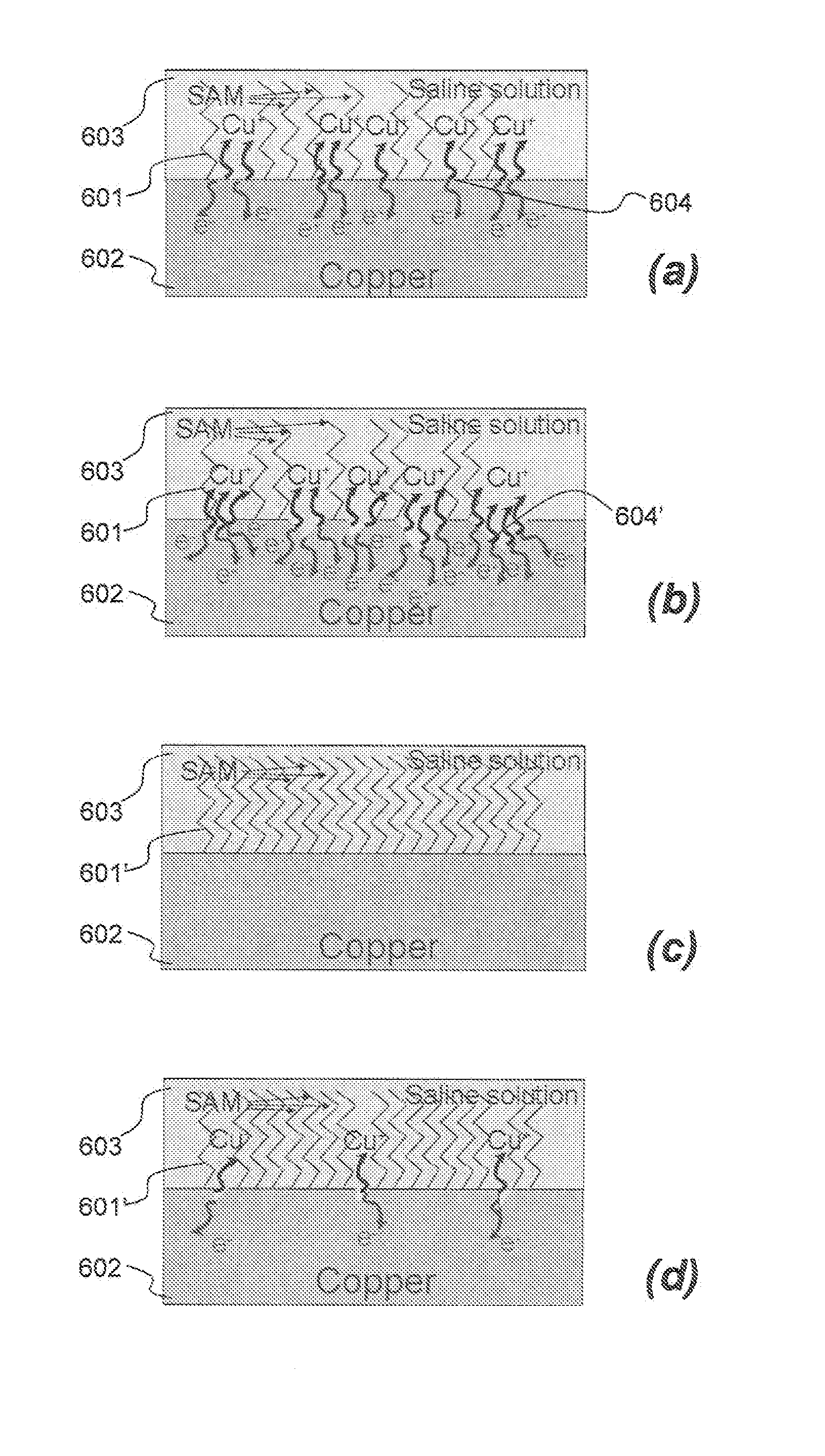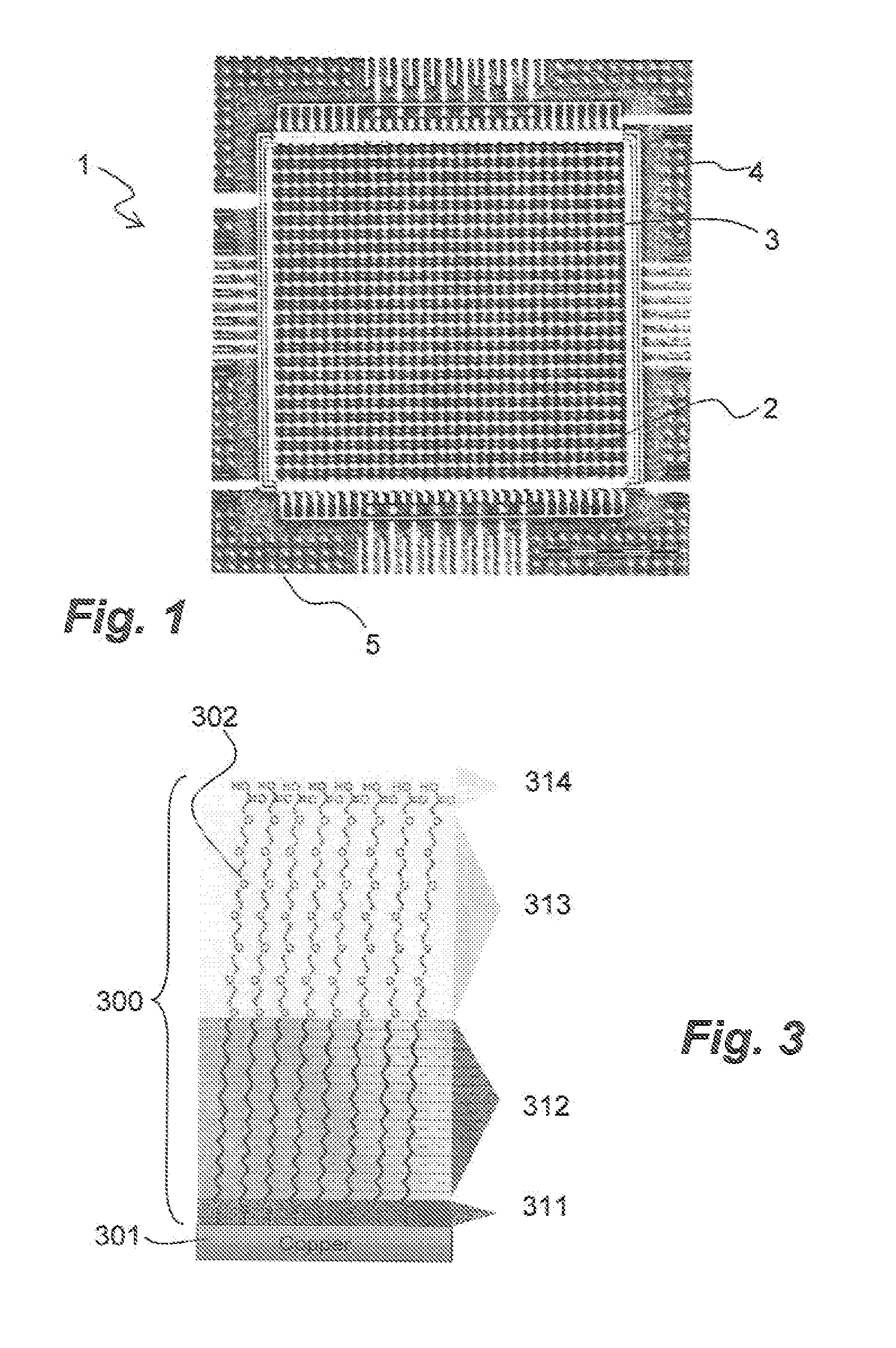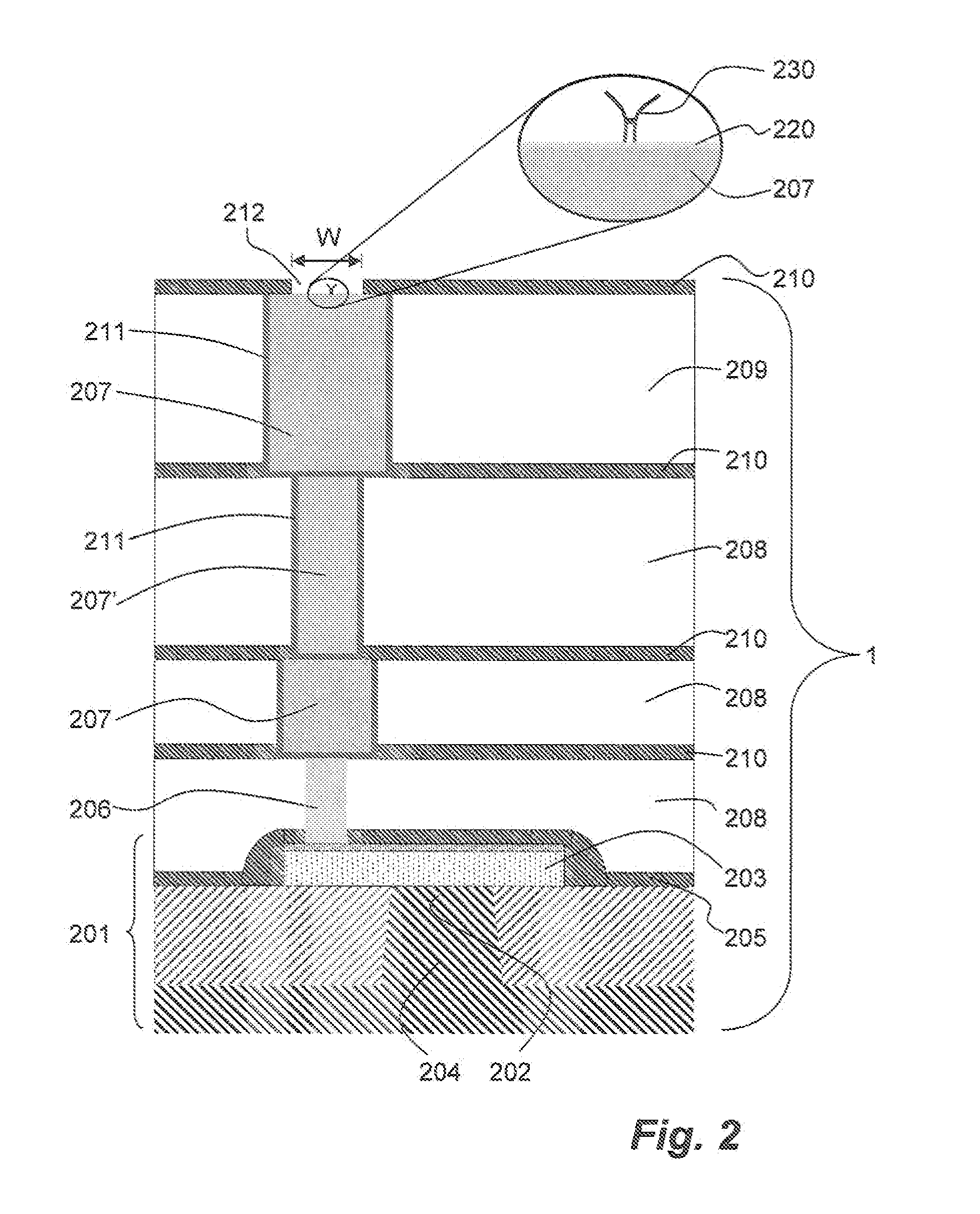Device having self-assembled-monolayer
a monolayer, self-assembling technology, applied in the direction of instruments, biological material analysis, coatings, etc., can solve the problems of bio-sensing devices subject to potentially conflicting design choices, catastrophic device failure, and degradation of device performance, so as to prevent corrosion inhibition, effective corrosion inhibition, and copper protection properties
- Summary
- Abstract
- Description
- Claims
- Application Information
AI Technical Summary
Benefits of technology
Problems solved by technology
Method used
Image
Examples
Embodiment Construction
[0038]An idealised schematic plan view of a semiconductor chip for use in bio-sensing applications is shown in FIG. 1. The chip 1 comprises an array 3, in this case a Cartesian x-y array, of individual sensor electrodes 2, which is surrounded by peripheral region 4 where copper dummies are buried in the silicon oxide 5. In use (not shown in this figure) microfluidic channels are provided which allow for a fluid to flow over the surface of the chip. In bio-sensing applications, the fluid may carry, in solution or suspension, target bio-molecules. The copper nano / microelectrode can bind the receptor biomolecules capable of binding the target biomolecules in the fluid.
[0039]FIG. 2 shows a schematic cross-section of a part of a semiconductor chip as shown in FIG. 1. The chip 1 includes a conventional transistor MOSFET 201 comprising a channel 202, in an n-well or a p-well 204 and underneath a polysilicon gate 203. The gate oxide between the channel and the gate is not shown in the figur...
PUM
 Login to View More
Login to View More Abstract
Description
Claims
Application Information
 Login to View More
Login to View More - R&D
- Intellectual Property
- Life Sciences
- Materials
- Tech Scout
- Unparalleled Data Quality
- Higher Quality Content
- 60% Fewer Hallucinations
Browse by: Latest US Patents, China's latest patents, Technical Efficacy Thesaurus, Application Domain, Technology Topic, Popular Technical Reports.
© 2025 PatSnap. All rights reserved.Legal|Privacy policy|Modern Slavery Act Transparency Statement|Sitemap|About US| Contact US: help@patsnap.com



